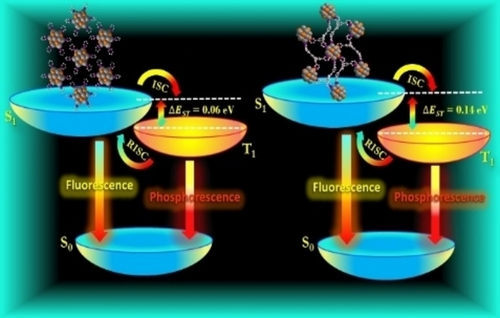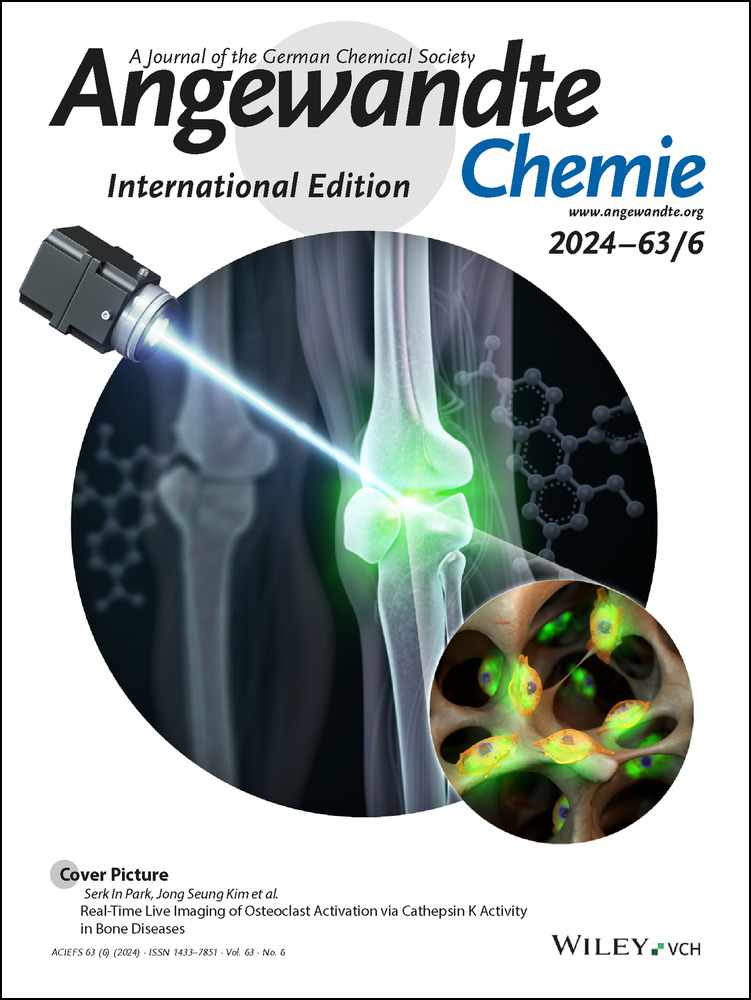Modulation of Singlet-Triplet Gap in Atomically Precise Silver Cluster-Assembled Material
Graphical Abstract
Abstract
Silver cluster-based solids have garnered considerable attention owing to their tunable luminescence behavior. While surface modification has enabled the construction of stable silver clusters, controlling interactions among clusters at the molecular level has been challenging due to their tendency to aggregate. Judicious choice of stabilizing ligands becomes pivotal in crafting a desired assembly. However, detailed photophysical behavior as a function of their cluster packing remained unexplored. Here, we modulate the packing pattern of Ag12 clusters by varying the nitrogen-based ligand. CAM-1 formed through coordination of the tritopic linker molecule and NC-1 with monodentate pyridine ligand; established via non-covalent interactions. Both the assemblies show ligand-to-metal-metal charge transfer (LMMCT) based cluster-centered emission band(s). Temperature-dependent photoluminescence spectra exhibit blue shifts at higher temperatures, which is attributed to the extent of the thermal reverse population of the S1 state from the closely spaced T1 state. The difference in the energy gap (ΔEST) dictated by their assemblies played a pivotal role in the way that Ag12 cluster assembly in CAM-1 manifests a wider ΔEST and thus requires higher temperatures for reverse intersystem crossing (RISC) than assembly of NC-1. Such assembly-defined photoluminescence properties underscore the potential toolkit to design new cluster- assemblies with tailored optoelectronic properties.
Conflict of interest
The authors declare no conflict of interest.
Open Research
Data Availability Statement
The data that support the findings of this study are available from the corresponding author upon reasonable request.





